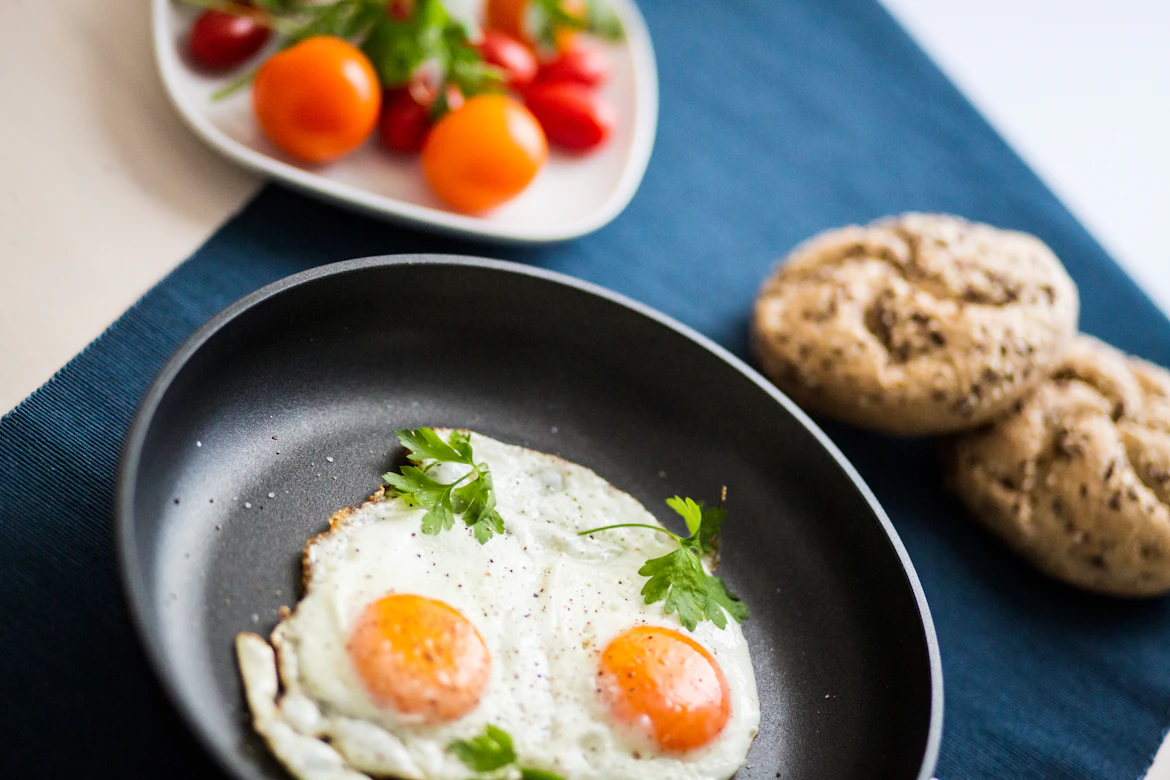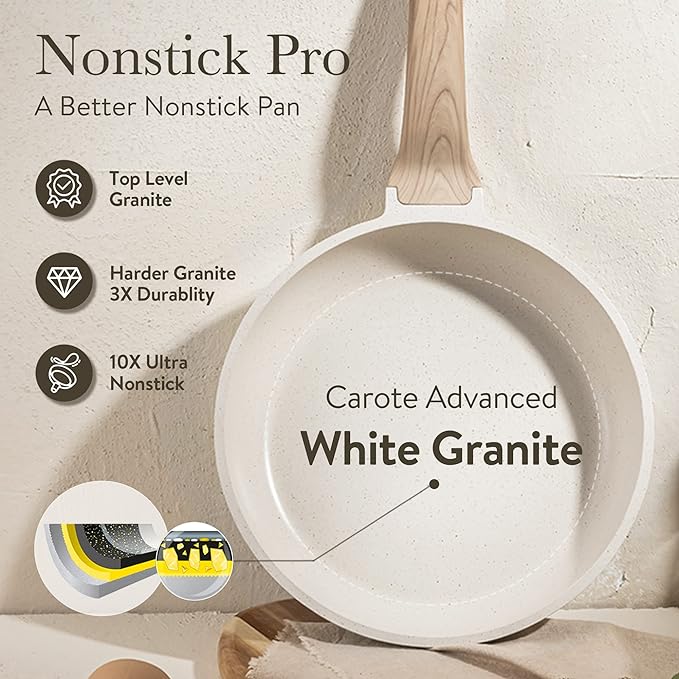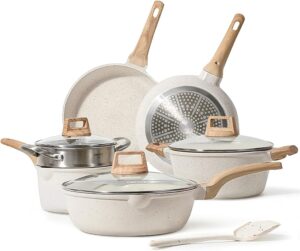Non-Stick Pan Care: Keeping Your Amazing Non-Stick Cookware in Top Shape in 2024

If there’s one piece of cookware that’s a must-have in any kitchen, it’s the non-stick pan. From flipping pancakes to sautéing veggies, non-stick pans make cooking easier and cleanup a breeze. But to keep them performing at their best, you need to know a thing or two about non-stick pan care. Let’s dive into the essentials so you can keep your pans in top shape for years to come.
Table of Contents
Basics of Non-Stick Pan Care
Taking care of your non-stick pan isn’t rocket science, but it does require a bit of attention. Non-stick pan care starts with knowing how to handle and clean them properly. Let’s cover the basics:
- Use the Right Utensils
When it comes to non-stick pan care, the utensils you use matter. Stick to wooden, silicone, or plastic utensils. Metal spatulas, spoons, or forks can scratch the non-stick surface, ruining the pan’s coating and shortening its lifespan.
Get Yourself The Perfect Nonstick Pots and Pans Today
- Cook at the Right Temperature
Non-stick pans are designed for low to medium heat cooking. High heat can break down the non-stick coating, leading to flaking and a shorter pan life. Plus, cooking at lower temperatures is usually sufficient for most tasks and can even help retain the food’s nutrients.
- Cleaning Your Non-Stick Pan
Proper cleaning is crucial for non-stick pan care. Here’s how to do it right:
- Hand Wash Only
Even if your non-stick pan says it’s dishwasher safe, hand washing is the best way to extend its life. Dishwashers can be too harsh and may damage your non-stick pans over time. Use a soft sponge or cloth with mild dish soap and warm water. Avoid abrasive scrubbers like steel wool, which can scratch the surface.
- Soak, Don’t Scrub
For stubborn food residue, don’t resort to heavy scrubbing. Instead, fill the pan with warm, soapy water and let it soak for a bit. Most stuck-on food will loosen up and can be easily wiped away with a soft sponge. This gentle approach is a key aspect of non-stick pan care.
- Season Your Pan
It might sound odd, but seasoning isn’t just for cast iron pans. Occasionally seasoning your non-stick pan can help maintain its surface. Here’s a quick guide:
Get Yourself The Perfect Nonstick Pans Today
1. Clean the Pan: Start with a clean, dry pan.
2. Apply Oil: Rub a small amount of oil (like vegetable or canola oil) onto the pan’s surface.
3. Heat the Pan: Place the pan on the stove over medium heat for a few minutes, then let it cool completely.
4. Wipe Off Excess: Wipe away any excess oil with a paper towel.
This process helps maintain the non-stick surface and is an often overlooked part of non-stick pan care.
Get Yourself The Perfect Nonstick Pans Today
Storage Tips for Non-Stick Pan Care
How you store your pans can impact their longevity. Here are some storage tips for better non stick pan care:
- Avoid Stacking: If you need to stack pans, place a paper towel or a soft cloth between them to prevent scratches.
- Hang Them Up: If possible, hang your nonstick pans to keep them from getting banged up in the cupboard.
- Keep Them Cool: Store your nonstick pans pans in a cool, dry place to prevent any potential damage from humidity or heat.
Get Yourself The Perfect Nonstick Pots and Pans Today
Cooking Tips for Longevity
Here are some bonus tips to help you get the most out of your non-stick pans:
- Preheat Properly
Always preheat your non-stick pan over low to medium heat before adding any food. This ensures even cooking and helps protect the non-stick coating.
- Use Enough Oil
While nonstick pans require less oil than other cookware, using a small amount can help food cook more evenly and prevent the non-stick coating from wearing down too quickly.
- Let It Cool Down
After cooking, let your nonstick pan cool down before washing it. Plunging a hot pan into cold water can warp it and damage the nonstick surface. Patience is a key virtue in nonstick pan care.

Common Mistakes in Non-Stick Pan Care
Even the best intentions can lead to mistakes. Here are a few common missteps to avoid:
- Using Cooking Sprays: These can leave a residue that builds up over time, reducing the effectiveness of the non-stick coating.
- High Heat: Cooking on high heat can damage the non-stick coating and release harmful fumes.
- Abrasive Cleaners: Harsh chemicals and abrasive cleaning tools can scratch and degrade your non-stick pans.
Get Yourself The Perfect Nonstick Pans Today
The Payoff of Good Non-Stick Pan Care
Investing a little time in non-stick pan care pays off big time. Not only will your pans last longer, but your food will cook more evenly, and cleanup will remain as easy as ever. Plus, you’ll save money in the long run by not having to replace your pans as often.

Final Thoughts
Non-stick pan care doesn’t have to be a chore. With the right practices, you can keep your pans in great condition and enjoy hassle-free cooking for years. Remember to use the right utensils, cook at appropriate temperatures, clean gently, and store wisely. Treat your nonstick pans well, and they’ll repay you with countless delicious meals.
Get Yourself The Perfect Nonstick Pots and Pans Today
Read More:
3 Best Electric Griddles to Buy from Amazon in 2023





